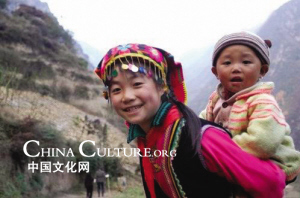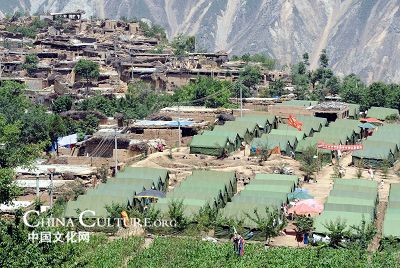| Reviving the Lost Tribe | ||||
After the earthquake, many Qiang people lost their homes and had to leave their villages. For many survivors, it was the first time they had seen the outside world. Since Beichuan was totally destroyed, the Qiang people have had to find other places to build new houses. This may force the Qiang people to separate, making it even more difficult to pass on the Qiang culture. The history of the Qiang ethnic group, one of the oldest minority groups in China, can be traced back to the period of Yan Di and Huang Di, two legendary rulers of ancient times, also referred to as ancestors of China. Records of the group can be found on inscriptions on bones and tortoise shells from the Shang Dynasty (1600 B.C.-1046 B.C.). The ancient Qiang minority group has had a big impact on China's history and the development of its diverse nationalities. "The main tribes in China's first kingdom Xia (2070 B.C.-1600 B.C.) were Qiang people," said historian Xu Zhongshu, who has extensively researched the history of the Qiang people who lived in Sichuan. Both legend and historical records show that Yu the Great, founder of the Xia Dynasty (2070 B.C.-1600 B.C) and reputed tamer of floods, was born in Beichuan, a Qiang inhabited area in the northwest of Chengdu, Sichuan Province. The population of the Qiang people today is about 320,000. They are mostly concentrated in the Maoxian, Wenchuan and Lixian counties of Aba Qiang and Tibetan autonomous prefecture; and in Beichuan Qiang autonomous county of Mianyang city in Sichuan province.
The jagged mountains and deep-cut valleys between Sichuan, Qinghai, Tibet and Yunnan are home to the Tibetan, Yi, Qiang, Nu, Dulong, Bai and Naxi minorities. But, the Qiang people were most seriously affected by the earthquake. Ancient Qiang architecture and folk customs are preserved in the Taoping village of Lixian county and Luobu village of Wenchuan county. Taoping was first founded in 111 BC during the Western Han Dynasty (206BC-AD24). No one in the village's 98 households was hurt in the earthquake. |
|



